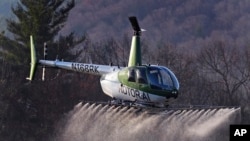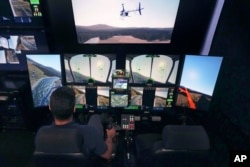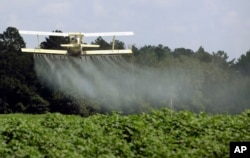American companies are developing unmanned aircraft systems that are larger than drones. The goal is for the aircraft to help agricultural producers and reduce risks to human safety.
Rotor technologies
When Hector Xu was learning to pilot a helicopter in college, he remembered having a few bad experiences while flying at night.
The experiences led him to research unmanned aircraft systems while getting his doctorate at Massachusetts Institute of Technology. Then, Xu formed Rotor Technologies in 2021 to develop unmanned helicopters.
Rotor has built two autonomous helicopters that the company calls Sprayhawks. Rotor aims to have as many as 20 Sprayhawks ready for market next year. The company also is developing helicopters that would fly shipments into disaster areas and to oil rigs in oceans. The helicopters could also be used to fight wildfires.
For now, Rotor is paying attention to agriculture. The industry has accepted automation with drones but sees unmanned helicopters as a better way to spray larger areas with pesticides and fertilizers.
Safety
A major appeal of automation in agriculture flights is safety.
Because special airplanes called crop dusters fly at around 240 kph and only about 3 meters off the ground, there are tens of accidents each year. The small planes hit power lines, cell towers and other planes. Older planes in disrepair and pilot tiredness play a part in accidents.
A 2014 report from the National Transportation Safety Board found there were more than 800 agriculture flight accidents between 2001 and 2010, including 81 that were deadly. A separate report from the National Agriculture Aviation Association found nearly 640 accidents from 2014 until this month with 109 deaths.
“It is a very, very dangerous, profession,” said Dan Martin, a research engineer with the U.S. Department of Agriculture’s Agriculture Research Service. Martin said about the pilots, “They make all their money in those short few months so sometimes it may mean that they fly 10 to 12 hours a day or more.”
Job risks also include possible contact with farming chemicals.
In recent years, safety and cost concerns have led to a number of drones flying above farmers’ fields, Martin said.
He added that some 10,000 drones will likely be sold this year alone. “It’s growing exponentially as a market, super fast,” Martin said.
But the size of the drones means they only can cover a small amount of the area that a plane or helicopter can. The limitation is providing an opening for companies building bigger unmanned aircraft like Rotor and another company, Pyka.
California-based Pyka announced in August that it had sold its first autonomous electric aircraft for crop protection to a buyer in the United States. Pyka’s Pelican Spray, a fixed-wing aircraft, received official approval last year to fly for crop protection. The company also sold its Pelican Spray to Dole for use in Honduras and to the Brazilian company, SLC Agrícola.
Lukas Koch is chief technology officer at Heinen Brothers Agra Services, the company which bought the Pelican Spray in August. Koch has called unmanned aircraft part of a coming “revolution,” that will save farmers money and increase safety.
The Kansas-based company operates out of airports from Texas to Illinois. Koch does not see the unmanned aircraft replacing all the company’s pilots but rather taking over the riskiest jobs.
“The biggest draw is taking the pilot out of the aircraft inside of those most dangerous situations,” Koch said.
But Koch also says that autonomous aviation systems could bring new dangers to an already busy airspace. Still, the risk is less of a concern in rural areas with plenty of open space and fewer people.
The future
Companies like Rotor have developed their systems to work if bad events come up.
Rotor’s helicopter, for example, has a half-dozen communications systems and, for now, a remote pilot in control.
If the ground team loses contact with the helicopter, Rotor has a system to deal with the problem. The system makes sure the engine can be turned off and the helicopter can perform a controlled landing.
The safety measures will go a long way to helping the company receive what it expects will be official government approval to fly its helicopters for business purposes. Once the company has approval, the difficulty, as Xu sees it, will be building more devices to meet the demand in the United States and Brazil.
I’m John Russell.
Michael Casey reported on this story for the Associated Press. John Russell adapted it for VOA Learning English.
_______________________________________________
Words in This Story
drone – n. a small uncrewed aircraft guided by remote control or onboard computers
helicopter—n. an aircraft whose lift comes from one or more powered rotors turning about vertically
autonomous – adj. undertaken or carried on without outside control
pesticide – n. a chemical or agent used to destroy pests
crop duster – n. the airplane used to spray crops especially with pesticides
exponentially – adv. characterized by an extremely fast increase











Forum